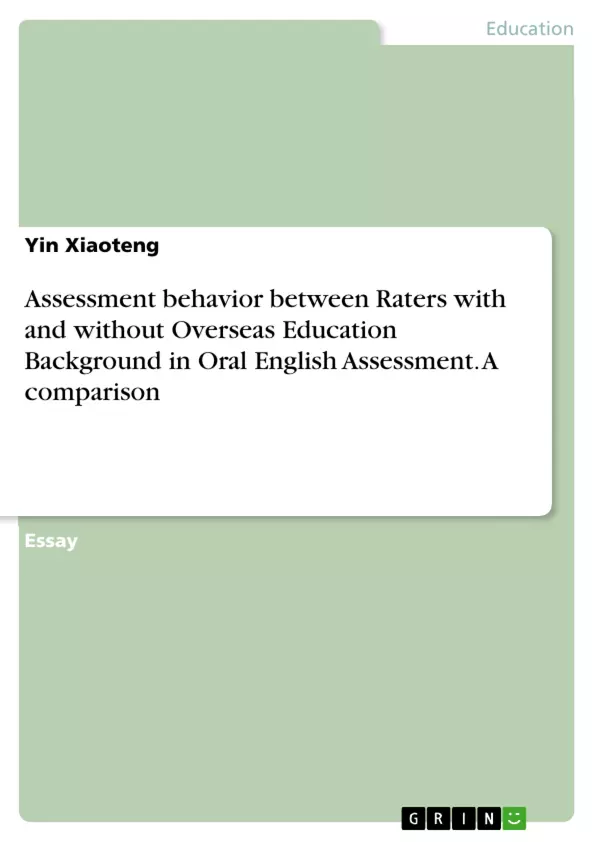This study conducted a comparison of assessment behavior between nonnative raters with overseas educational backgrounds (NNSWOEB) and nonnative speakers without overseas educational backgrounds (NNSW/OOEB) in an oral English assessment.
The 8 participants, all nonnative speakers, are divided by their overseas educational background into two categories. Each category, consisting of 4 raters, are required to rate 28 English Education major students' oral English samples. Data analysis was conducted using Minifac (Facets) Rasch software. Results of the analysis revealed that a: there is significant difference in severity between NNSWOEB raters and NNSW/OOEB raters. b: NNSW/OOEB raters are more severe than NNSWOEB raters in every rating criteria except criteria of pronunciation. c: NNSWOEB raters have different rating concept to rating scales with NNSW/OOEB raters.
Study findings add support to previous research that has demonstrated nonnative speakers or speakers without overseas educational background are more severe than native speakers or speakers with overseas educational backgrounds , particularly in grammatical criteria.
Inhaltsverzeichnis (Table of Contents)
- Introduction
- Literature Review
- Methodology
- Rater Characteristics
- Research Instrument
- Data Analysis
- Results and Discussion
- Raters Severity and Consistency
- Rating Criteria
- Rating Scale
- Conclusion
- Suggestions and Further Research
- References
Zielsetzung und Themenschwerpunkte (Objectives and Key Themes)
This research aims to investigate the differences in assessment behavior between nonnative English raters with and without overseas educational backgrounds. The study seeks to understand how raters' educational experiences influence their severity, rating criteria, and interpretation of rating scales in oral English assessment.
- The impact of overseas educational background on rater severity in oral English assessment.
- The influence of overseas educational background on the application of rating criteria in oral English assessment.
- The role of overseas educational background in shaping raters' understanding of rating scales in oral English assessment.
- The comparison of assessment behavior between nonnative speakers with and without overseas educational backgrounds.
- The potential implications of these findings for the training and development of nonnative English raters.
Zusammenfassung der Kapitel (Chapter Summaries)
The introduction provides context for the study by highlighting the growing importance of English speaking skills and the challenges of assessing oral English proficiency. The literature review discusses existing research on rater variability, focusing on the impact of raters' language backgrounds on their assessment behavior. The methodology section outlines the study's design, including the selection of participants, the research instrument, and the data analysis methods. The results and discussion section presents the findings of the study, comparing the assessment behavior of nonnative speakers with and without overseas educational backgrounds. The conclusion summarizes the key findings and discusses their implications for future research and practice.
Schlüsselwörter (Keywords)
The study focuses on the assessment of oral English proficiency by nonnative speakers, particularly the impact of overseas educational background on rater behavior. Key terms include: nonnative speakers with overseas educational backgrounds (NNSWOEB), nonnative speakers without overseas educational backgrounds (NNSW/OOEB), rater severity, rater consistency, rating criteria, rating scale, and oral English assessment.
- Quote paper
- Doctor Yin Xiaoteng (Author), 2016, Assessment behavior between Raters with and without Overseas Education Background in Oral English Assessment. A comparison, Munich, GRIN Verlag, https://www.grin.com/document/341436



